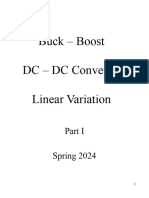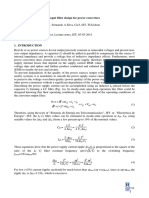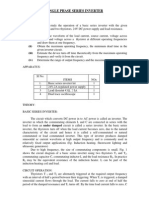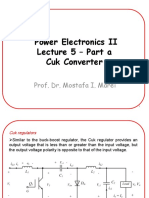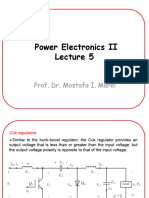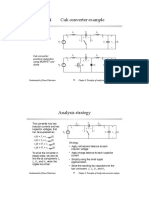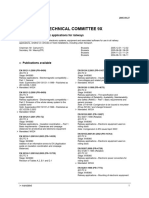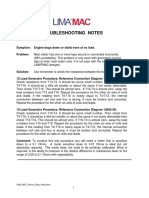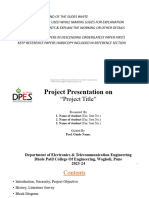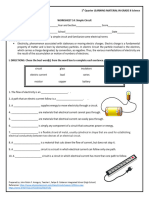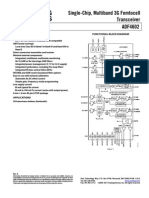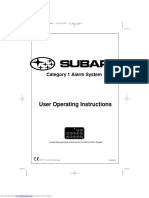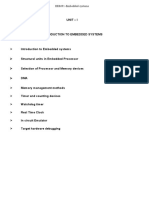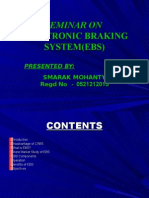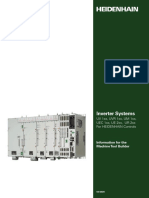0% found this document useful (0 votes)
24 views17 pagesAssociated Output and Input Filter Ac Waveforms Caused by Switching Selecting Inductor and Capacitor Values To Meet Ripple Specifications
The document discusses the selection of inductor and capacitor values to meet ripple specifications in PWM converters, detailing the mathematical relationships for determining L(D) and C(D) based on duty cycle and ripple limits. It also covers the design of double pole low pass filters, emphasizing the impact of inductor current ripple on capacitor voltage ripple, and addresses EMI issues related to switching waveforms in power supplies. The analysis includes examples and equations to illustrate the concepts and their applications in circuit design.
Uploaded by
Vyshnav T KCopyright
© © All Rights Reserved
We take content rights seriously. If you suspect this is your content, claim it here.
Available Formats
Download as PDF, TXT or read online on Scribd
0% found this document useful (0 votes)
24 views17 pagesAssociated Output and Input Filter Ac Waveforms Caused by Switching Selecting Inductor and Capacitor Values To Meet Ripple Specifications
The document discusses the selection of inductor and capacitor values to meet ripple specifications in PWM converters, detailing the mathematical relationships for determining L(D) and C(D) based on duty cycle and ripple limits. It also covers the design of double pole low pass filters, emphasizing the impact of inductor current ripple on capacitor voltage ripple, and addresses EMI issues related to switching waveforms in power supplies. The analysis includes examples and equations to illustrate the concepts and their applications in circuit design.
Uploaded by
Vyshnav T KCopyright
© © All Rights Reserved
We take content rights seriously. If you suspect this is your content, claim it here.
Available Formats
Download as PDF, TXT or read online on Scribd
/ 17





